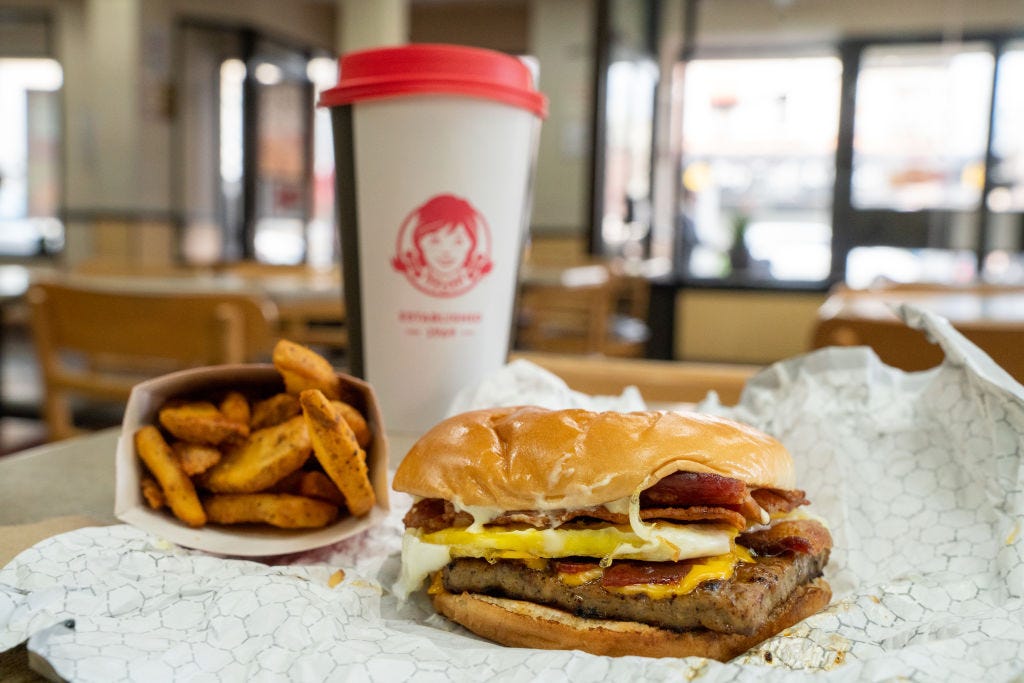|
 |
Why Consumers Should Welcome Wendy’s Dynamic Pricing and Reject Political Posturing
Price adjustments help both businesses and consumers by reflecting how the value of goods and services can vary over time, a strategy politicians can’t seem to grasp
When Wendy’s CEO Kirk Tanner announced last month that the chain might start experimenting with dynamic pricing—that is, a system in which prices aren’t fixed but fluctuate as market conditions change—he was met with a surprising level of outrage. It seems everyone, from social media influencers to U.S. senators, automatically assumes dynamic pricing is bad for consumers and somehow unfair. The media chatter and backlash concerning Tanner’s statements was so intense that Wendy’s had to release a formal response to clarify its intentions and address price hike speculation.
Insinuating that Wendy’s would employ nefarious strategies to overcharge customers shows the pessimistic view Americans have toward businesses today. But dynamic pricing isn’t intended to “gouge” consumers or anger patrons. Rather, it allows businesses to encourage purchase behavior by responding to market signals.
What Is Dynamic Pricing?
Dynamic pricing has been around for ages and, simply put, it is a pricing policy that allows for price adjustments rather than having prices that are fixed. The mechanics of price fluctuations gained considerable attention in the 1950s after the economist William Vickrey determined that public transport systems could optimize congestion levels by increasing or decreasing prices: If subway fare increased at a certain time of day, people would be more likely to ride at an alternative time. Vickrey was later awarded a Nobel Prize for his contributions to the field of economics, and his congestion pricing methods have been used in a variety of ways across a number of diverse industries.
For example, frequent flyers know the best time to book a trip falls outside the weekend time slots. And bargain buyers take advantage of priced-to-sell perishables nearing expiration or post-holiday sales. Consumers aren’t dumb and know that peak periods or high demand will result in premium prices. This is why Ticketmaster can charge Swifties an exorbitant amount: Arenas can only hold so many concertgoers, and devoted fans have proved they are willing to pay the price.
All this is a good thing. By charging higher prices for popular performances, Ticketmaster can afford to subsidize the costs of shows for lesser-known artists looking for their big break. Organizations should—and do—use the opportunity to charge higher prices on some products to compensate for lower-margin goods. For instance, airlines subsidize the costs of economy seating with the price of first class tickets, and restaurants tend to set prices high for popular menu items, such as burgers.
In addition to being in tune with consumer behavior and purchasing power, businesses consider other objectives when it comes to price setting. For instance, a company may engage in penetration pricing, in which prices are set low to incentivize consumers to try a product. Or a firm might price a product high for status positioning and brand appeal, a tactic called premium pricing. Finally, high low pricing occurs when a product's price tag is high, but coupons or customer rewards result in significant discounts, which make buyers feel that they are getting a good deal.
Firms often adjust their strategies in response to current trends and competitive pressures, but price-setting strategies only work when consumers are responsive to them. There are instances of so-called inelastic demand, in which price has little impact on consumer behavior. For instance, regardless of whether gas prices go up, if people need to drive to work, they will still fill up their tank. If gas prices drop, drivers will be happy about it but won’t necessarily buy more gas—you can only put so much in your tank, and you are not going to drive extra miles on purpose to burn more gas on the way to work.
An Overblown Response
Some politicians and members of the public, however, failed to recognize the benefits of dynamic pricing in the case of Wendy’s. The uproar began when Tanner conveyed on an earnings call that digital menu boards would be featured in all company-operated Wendy’s restaurants by the end of 2025. Tanner shared his interest in incentivizing demand during off-peak hours—much as restaurants do with happy hour specials—and experimenting with real-time price adjustments regarding special offers. For example, when a free Frosty day occurs, digital screens could quickly highlight the deal and eliminate the standard price.
This plan to use digital media for showcasing menu items and shifting prices when appropriate isn’t a revolutionary idea. In fact, many firms already employ this approach—and McDonald’s has been doing it for years. It is not unusual for franchises and retail stores to have digital screens or electronic tags on their shelves and products that auto-adjust prices accordingly. But headlines claiming that Wendy’s would employ anti-consumer tactics spread quickly, and politicians were quick to bash the franchise business.
New York state Rep. Kenny Burgos shared on X a New York Post article that suggested that Wendy’s pricing could be predatory in nature, and he replied that he would immediately “draft a bill against this dystopian s**t.”
U.S. Sen. Bob Casey (D-Pa.) sent a formal letter to Tanner and attempted to school the successful CEO on why it would be wrong to change Baconator prices. Casey is currently on a mission to search out and stop “greedflation” tactics, and worries over Wendy’s prices provided a great opportunity to promote his platform. If only Casey had a greater interest in actual economic problems such as inflation rates and the compounding effects of government debt.
Not to be left out, Sen. Elizabeth Warren (D-Mass.) also called attention to this matter, posting that Wendy’s is “planning to try out ‘surge pricing.’” According to her, that means “you could pay more for your lunch, even if the cost to Wendy’s stays exactly the same.” Her assertion is flawed on many levels, especially since prices are rarely determined according to costs alone.
Warren ends her post with, “It’s price gouging plain and simple, and American families have had enough.” Clearly fast-food prices are no trifling matter for Warren. This is not the first time she has scorned price-setting strategies—and it won’t be the last, as her “Big Sandwich” battle rages on with regard to Roark Capital’s aspirations to acquire Subway. But consumer behavior, rather than self-promoting politicians, should determine the prices businesses charge.
So What If Wendy’s Charges Higher Prices?
For argument's sake, let’s say that Sen. Warren is right, and Wendy’s is planning to engage in price gouging—though that seems unlikely, given its recent announcement of $1 cheeseburgers throughout the month of March. According to the National Conference of State Legislatures, “Price gouging refers to when retailers and others take advantage of spikes in demand by charging exorbitant prices for necessities, often after a natural disaster or other state of emergency.” According to this definition, Sen. Warren must be expecting that things will take a terrible turn in 2025 and that Wendy’s will be ready to jack up prices when disaster strikes. Even if that were to happen and Wendy’s prices climbed too high, consumers could either choose to comply and still buy, abstain and go without, or simply eat somewhere else.
Consumers vote with their dollars, after all, and no one is being forced to eat at Wendy’s. And if enough consumers choose to abstain or eat elsewhere, Wendy’s will have to adjust its prices to get back in line with consumer interests and expectations—or forgo running a profitable business altogether. Warren’s concerns are dramatically overstated, and Burgos’ assertion that this is “dystopian s**t” is hugely overblown (assuming Burgos’ perception of great societal suffering entails more than just higher-priced Jr. Bacon Cheeseburgers).
Price points are influenced by demand levels, just as demand levels can have an influence on price points. That is why dynamic pricing systems can be a great option for businesses and why we shouldn’t fret over price adjustments. It would make little sense for Wendy’s to deter traffic to its stores with price hikes, especially given the competition from other fast food burger chains. Nor would it make sense to give consumers a reason to badmouth the brand if they feel they are being overcharged, especially when calls for business boycotts can spread quickly on social media.
A company’s success is derived from the value it generates for its customers, and if customers don’t view what a company has to offer as being worth the cost, well, that company will not last long. When all is said and done, firms are at the mercy of consumer wallets and market interests. Rather than rally against fast food chains, politicians and bureaucrats should mind their own business and refrain from using our tax dollars to spread economic ignorance and champion more political interference in private decisions.
You’re currently a free subscriber to Discourse .

